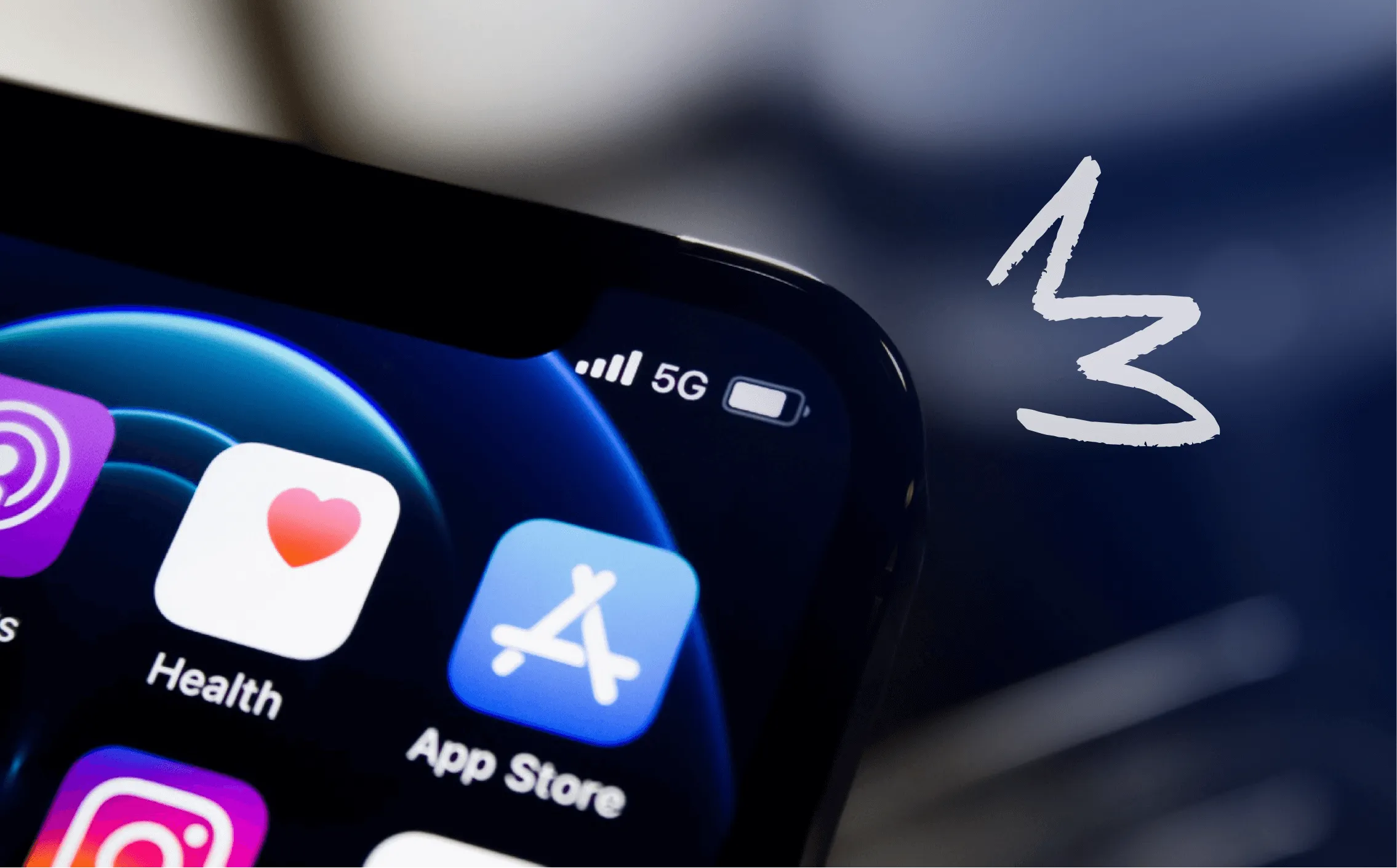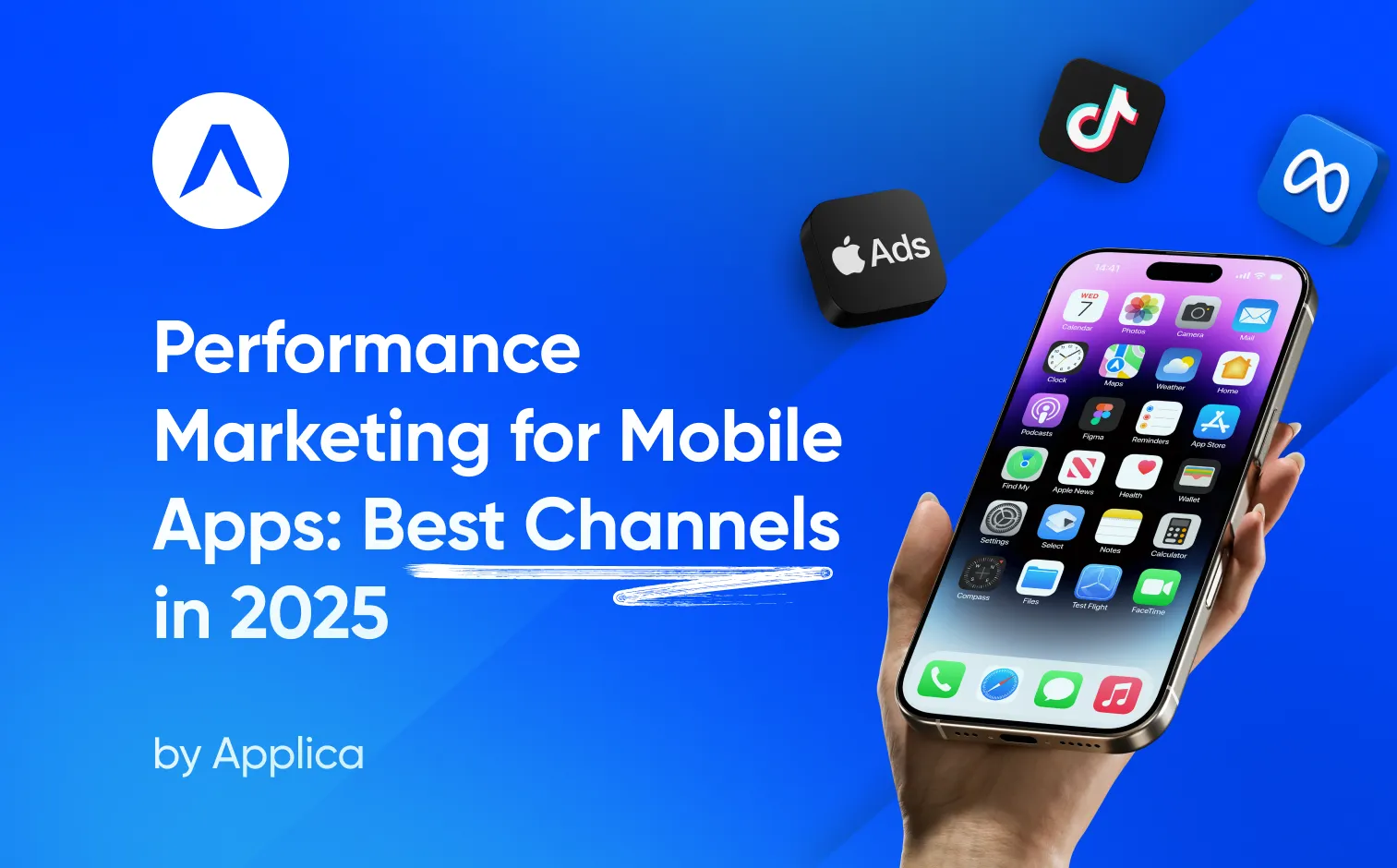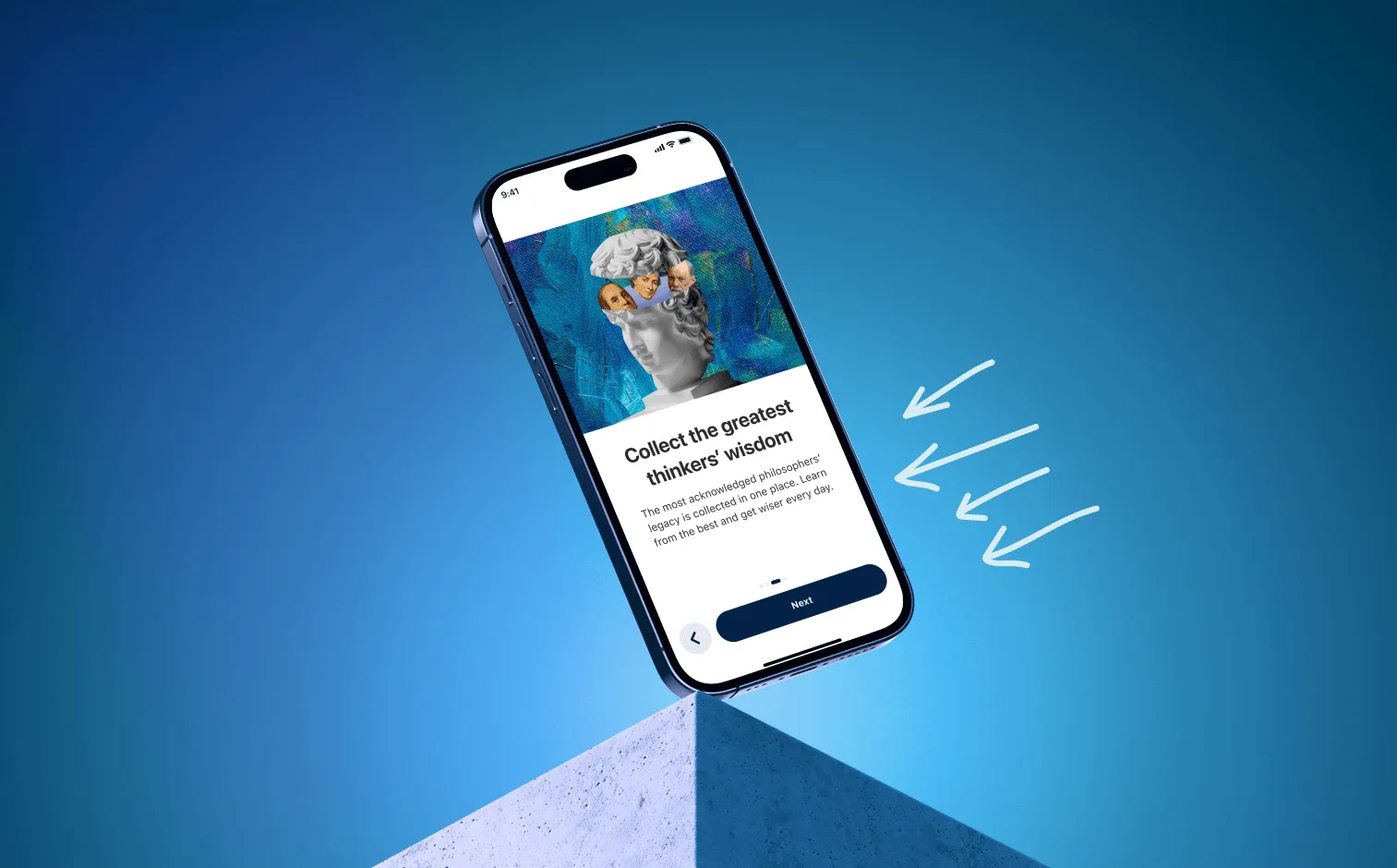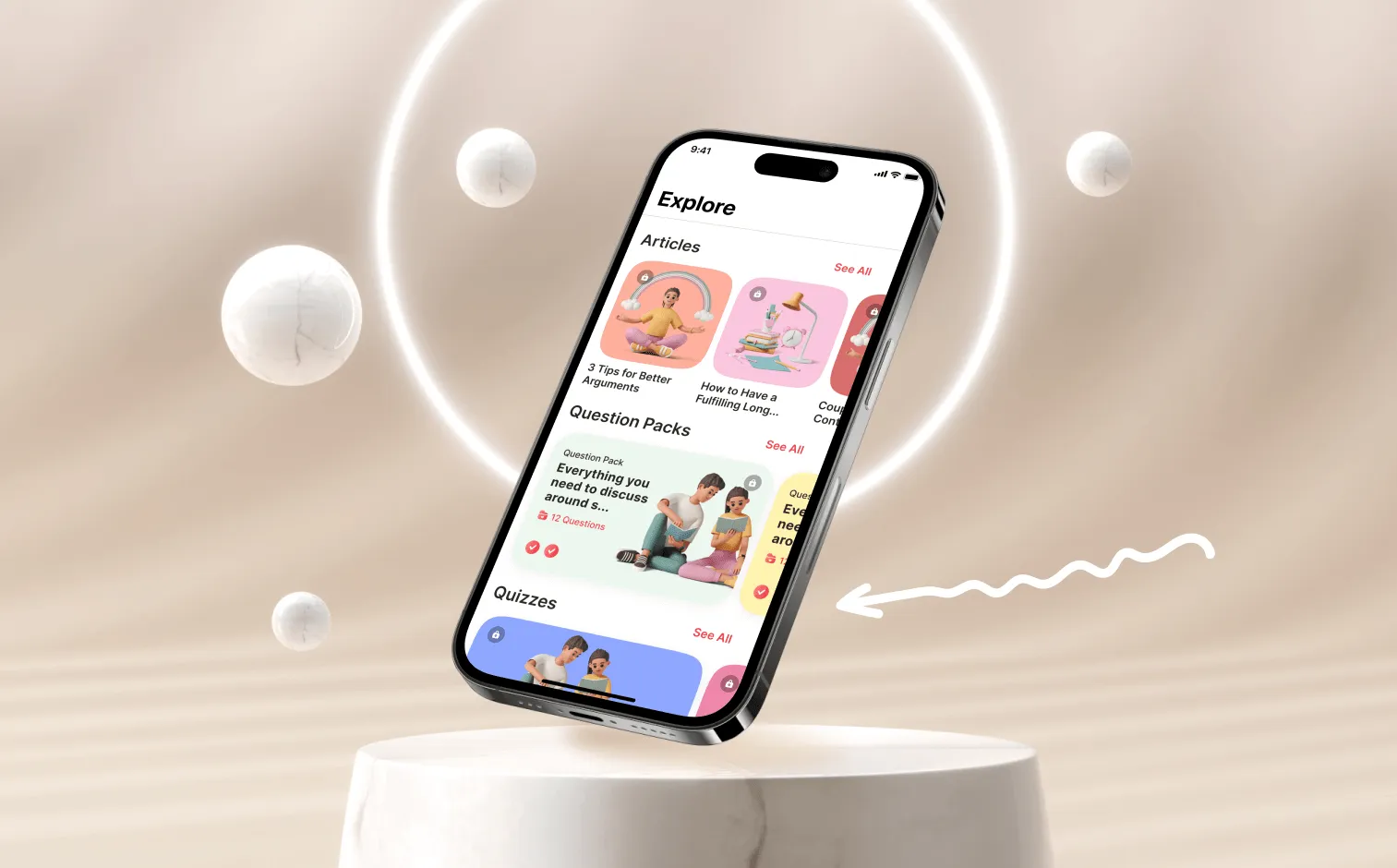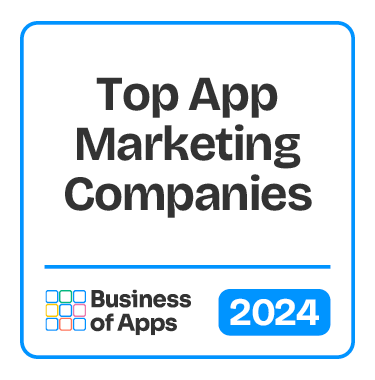What is User Acquisition?
User acquisition is the process of driving new users to a product, website, or app. It involves marketing activities that focus on attracting new users and converting them into active users. It can include activities such as search engine optimization (SEO), content marketing, pay-per-click (PPC) advertising, display advertising, social media campaigns, and ad retargeting.
User acquisition for mobile apps is a big part of app marketing and involves activities such as optimizing the app store listing, running app install campaigns, and optimizing user onboarding to increase app usage. App owners typically use a combination of organic and paid tactics to attract users and grow an app's user base. These tactics include optimizing the app store listing, running app install campaigns, leveraging influencer marketing, and running retargeting ads.
Understanding Your App's Target Audience
Understanding your audience is essential for a successful user acquisition strategy for apps. Knowing who your target audience is and what they are looking for in an app can help you create an app specifically tailored to their needs. You can use this knowledge to craft an effective user acquisition strategy that will help you reach the right people. Additionally, understanding your audience can also help you identify the best channels to reach them, as well as the best messages to use in order to capture their attention. For apps specifically, understanding your audience can help you create a product that users will love, as well as the right messaging to use in app store descriptions and other marketing materials to make sure your app is seen by the right people.
Define the Target Audience
When it comes to app user acquisition strategy, it is important to define the target audience. This can be done by examining the customer base of the product or service, researching the demographics of the product's user base, and identifying the type of person the product or service is designed to serve. For apps specifically, it is important to consider the user's device, their app store preferences, and the type of content they are likely to find useful. It is also important to understand the user's motivations and interests in order to create a successful user acquisition strategy.
Conduct Market Research
User research for mobile app acquisition strategy is an essential part of understanding the needs, motivations, and behaviors of potential users. This research can take many forms, such as surveys, interviews, focus groups, and usability testing. The goal of this research is to understand what potential users are looking for and how the product can provide value to them. For apps specifically, user research can help identify what features are most important to users and how they interact with the app. Additionally, user research can provide insights into the most effective messaging and marketing strategies to reach the right users.
App Store Optimization (ASO)
App Store Optimization (ASO) is a key component of mobile apps user acquisition. It is the process of optimizing an app store listing to make it more visible and attractive to potential users. ASO involves optimizing app store elements such as keywords, descriptions, and screenshots, as well as creating engaging content, such as videos and reviews. By optimizing these elements, it is possible to increase app visibility and attract more users. This process can also lead to higher rankings in the app stores, which in turn can result in increased downloads and a larger user base.
Why is ASO Important?
App Store Optimization (ASO) is an essential tool for user acquisition campaigns. ASO helps businesses gain visibility in the app stores, and increases the chances of users discovering an app organically. A well-optimized app can make the difference between success and failure in the app stores for many businesses. By optimizing an app for the App Store, businesses can reach the right audiences, increase the visibility of an app, and ensure that the app is easy to find. ASO also provides valuable data on user behavior, which can be used to further optimize an app and increase user acquisition.
Tips for Optimizing Your App for the App Store
- Use App Store Optimization (ASO) techniques to ensure your app is easily discoverable in the App Store.
- Create an eye-catching app icon and screenshots that demonstrate the features and benefits of your app.
- Utilize app store keywords to ensure your app is discoverable in a relevant search.
- Monitor your app’s performance and customer reviews to identify areas of improvement.
- Create a unique and engaging App Store listing with a compelling description, high-quality images, and video previews.
- Engage with your user base to ensure customer satisfaction and loyalty.
- Leverage user feedback to identify and address any bugs or issues.
- Incorporate the latest mobile technologies to ensure your app is up-to-date and compatible with the newest devices.
- Utilize both organic and paid campaigns to promote your app.
- Ensure your app is localized for different markets and languages.
Best Practices for Keyword Research and Implementation
- Identify Your Target Audience: Before beginning your keyword research, it is important to identify who you are trying to target. Consider who your ideal customer is and what keywords they would likely use when searching for your product or service. This will help you focus your research and tailor your keywords to your target audience.
- Research Keywords: Once you have identified your target audience, you can begin researching relevant keywords. Use keyword research tools like Google AdWords Keyword Planner or Moz Keyword Explorer to identify potential keywords. Make sure to consider both short-tail and long-tail keywords. Short-tail keywords are more general and are likely to have higher search volumes, but are more competitive. Long-tail keywords are more specific and have lower search volumes, but are less competitive.
- Prioritize Keywords: Once you have compiled a list of potential keywords, prioritize the ones that are most relevant to your product or service. Consider the search volume, competition, and relevance of each keyword when making your decision.
- Implement Keywords: Once you have identified and prioritized your keywords, start implementing them throughout your website and content. Make sure to include them in titles, headings, meta descriptions, body copy, and image alt text. You should also consider optimizing for local SEO by including location-specific keywords.
- Monitor Performance: After implementing your keywords, it is important to monitor their performance. Use analytics tools to track the performance of each keyword and adjust your strategy accordingly. This will help you ensure that you are targeting the most effective keywords and maximizing your reach.
Paid User Acquisition
Paid user acquisition strategy for mobile apps is a method of marketing used to acquire new customers or users for a product or service. It involves spending money on advertising, such as search engine ads, sponsored content, display ads, or influencer campaigns, in order to reach a targeted audience and drive conversions. The goal of paid user acquisition is to increase the number of users, by both acquiring new customers and retaining existing ones. Paid user acquisition can be an effective way to quickly grow an audience and increase sales, but it also requires careful budgeting and planning in order to reach the desired result.
Types of Paid User Acquisition
There are many different types of paid user acquisition. These include:
- Paid Search Advertising: Paid search advertising is a form of online advertising where businesses pay for ads to appear at the top of search engine results. It’s a great way to target people who are actively searching for a particular product or service.
- Display Advertising: Display advertising is a form of online advertising that uses graphical banners or images to advertise products or services. It’s often used to raise brand awareness, generate leads, and promote sales.
- Social Media Advertising: Social media advertising is a form of online advertising that uses social media platforms such as Facebook, Twitter, and LinkedIn to reach potential customers. It’s a great way to target specific audiences and measure the success of campaigns.
- Affiliate Marketing: Affiliate marketing is a form of performance-based marketing where businesses pay for sales or leads generated by affiliates. It’s often used to reach a large number of potential customers and increase sales.
- Content Marketing: Content marketing is a form of marketing that involves creating valuable content to attract and engage customers. It’s a great way to establish a brand’s reputation and build relationships with potential customers.
- Email Marketing: Email marketing is a form of direct marketing that involves sending emails to potential customers. It’s a great way to build relationships, educate customers, and increase sales.
Determining the Right Budget
Determining the right budget for paid user acquisition mobile can be a difficult process. It is important to consider a few factors before setting the budget, such as the cost per user acquisition, the expected return on investment, and the current market conditions. The cost per user acquisition should be evaluated to ensure that the budget is within the company’s means, while the expected return on investment should be evaluated to ensure that the budget is bringing in enough users to turn a profit. Additionally, the current market conditions should be assessed to make sure that the company is not overspending in a saturated market. By taking all of these factors into account, a company can set a budget for paid user acquisition that is both reasonable and effective.
Measuring the Effectiveness of Paid User Acquisition Campaigns
Measuring the effectiveness of paid user acquisition campaigns is an essential part of any successful marketing strategy. There are a number of different metrics that can be used to measure a campaign’s success, such as cost per acquisition (CPA), cost per click (CPC), return on ad spend (ROAS), and click-through rate (CTR). Additionally, companies should keep track of user retention rates, customer lifetime value (CLV), and user engagement levels to ensure that their campaigns are driving qualified users that will remain engaged with the brand. By carefully tracking these metrics, companies can make informed decisions about the effectiveness of their campaigns and adjust their strategies accordingly.
Social Media Marketing
Social media marketing for apps is an effective way to reach potential users and increase downloads. App developers can use social media platforms such as Twitter, Facebook, Instagram, and YouTube to create content and engage with their audience. Content can include videos, infographics, and images as well as educational and entertaining posts. By creating a presence on social media, developers can increase their visibility and attract more users to their app. Additionally, they can use social media to learn more about their audience and make adjustments to their app to ensure it is meeting their needs.
Influencer Marketing
Influencer marketing for apps can be a powerful way to reach new customers and build brand awareness. By leveraging the influence of an influencer, app developers can reach a larger and more targeted audience, allowing them to increase their reach and attract more downloads. Influencers can also help to generate user engagement and create a lasting connection between the app and its users. Furthermore, influencers can provide valuable feedback and insights on the app, which can help developers make improvements and optimize the user experience.
Public Relations (PR)
Public relations (PR) for apps is an important aspect of any successful app development project. It involves creating a positive public image and building relationships with users, customers, and stakeholders. By creating an effective PR strategy, app developers can increase awareness of their product, drive downloads, and build customer loyalty. PR activities can include press releases, media outreach, content marketing, influencer relations, and social media campaigns. App developers should always consider how their app can benefit the public and the user, and craft their PR strategy accordingly.
The Importance of PR for App User Acquisition
Public Relations (PR) is an important tool for app user acquisition solution. PR can help to build a strong brand presence and create a favorable impression of the app in the eyes of potential users. Through PR, app developers can reach out to a wide range of audiences, including media and influencers, to share their message and promote the app. This can help to boost the visibility and awareness of the app, which can, in turn, lead to increased downloads and user acquisition. Additionally, PR can be used to build relationships with potential users, creating a connection and trust, which can lead to further user acquisition.
Best Practices for App PR
- Develop a comprehensive PR strategy: A key first step to successful PR for an app is to create a comprehensive PR strategy that outlines the objectives of the PR campaign, target audiences, budget, and timeline.
- Develop unique content: Create unique content that stands out from the competition and adds value to your app. Content can include blog posts, videos, podcasts, infographics, and more.
- Leverage influencers: Find influential bloggers, social media influencers, journalists, and thought leaders in your industry and create relationships with them. These influencers can help spread the word about your app.
- Utilize social media: Utilize social media platforms such as Twitter, Facebook, and Instagram to promote your app. Use social media to interact with customers, respond to feedback, and promote your app.
- Measure and track progress: Keep track of performance metrics such as downloads, app store ratings, and reviews to measure the success of your PR campaign.
- Follow up & continue to engage: Don’t forget to follow up with customers, journalists, and influencers to ensure that your app continues to be successful and relevant in the market.
Referral Marketing
Referral marketing for apps is a great way to increase user engagement and bring new users to the app. Referrals are a powerful tool for app developers as they allow users to spread the word about the app to their friends and family, increasing the app’s reach and visibility. Referral programs can offer rewards to users who refer others, such as discounts or bonus in-app content, which encourages users to keep referring more people. Referral marketing can also help app developers track the performance of their marketing campaigns and better understand their user base. All in all, referral marketing for apps can be an effective way to drive organic growth and engagement for the app.
Importance of Referral Marketing for App User Acquisition
Referral marketing is an important tool for app user acquisition strategy as it provides an easy and cost-effective way to spread awareness of your app and build a larger customer base. When users refer your app to their friends and family, it serves as a valuable endorsement of the app and can help generate more downloads. Additionally, referral marketing can help you target users who are more likely to be interested in your app since they are likely to have similar interests to those of the people who referred them. Furthermore, referral marketing can help you track the effectiveness of your app and quickly identify any issues with its user experience. Finally, referral marketing can also help you build a network of loyal users who are more likely to actively engage with your app and become long-term customers.
Best Practices for Referral Marketing
- Offer attractive incentives: Offering incentives such as discounts, credits, or gifts is a great way to motivate users to refer to your app. Make sure the incentives are attractive enough to encourage users to refer to your app.
- Make the referral process easy: Make sure the referral process is easy and straightforward. Make sure it is easy to find and access the referral link and that it can be shared quickly and easily.
- Build relationships with customers: Referral marketing is all about relationships. Try to build relationships with your customers and make them feel valued. This will make them more likely to refer to your app.
- Use social media: Social media is an effective way to reach potential customers. Use social media to promote your referral program and share your referral link.
- Use influencers: Reach out to influencers in your industry and ask them to share your referral link with their followers. This is a great way to get more people to see your referral program and take advantage of it.
- Track and measure results: Track and measure the results of your referral program. This will help you determine which strategies are working best and which ones need to be improved.
- Optimize your program: Make sure to constantly update and optimize your referral program. This will help you keep up with the ever-changing landscape of referral marketing.
- Follow up: Make sure to follow up with users who have referred your app. A simple thank you message can go a long way in increasing loyalty and customer satisfaction.
App Install Campaigns
App install campaigns involve targeting users with ads that encourage them to download and install a business's app. These campaigns can be targeted to specific audiences, allowing businesses to reach the people they are most likely to convert into customers. App install campaigns can also be used to re-engage existing customers and encourage them to use the app more often. With the right targeting and creative, app install campaigns can be a great way to build a successful, long-term customer base.
Creating Effective App Install Campaigns
To create an effective app install campaign, it is important to consider several factors. First, it is essential to choose the right platform for your app and target the right audience. You should also create relevant, compelling ad copy that speaks to your desired audience, as well as optimize your budget to ensure maximum reach. Additionally, consider testing different creative formats and visuals to determine which ones will be most successful. Finally, track and monitor your results to understand how your audience is engaging with your app and adjust your strategy accordingly. By following these steps, you can create an effective app install campaign that will help you achieve your desired results.
Identifying the Right App Install Networks
Identifying the right app install networks is important for ensuring that your app is promoted in the most effective way. Researching the different networks available is essential so that you can compare the reach, cost, and effectiveness of each. It’s also important to look at how the network reaches potential users, as some networks may be better suited to certain types of users or regions. Additionally, it’s worth exploring the analytics options for each network, as this will give you an understanding of who is downloading your app and how they are interacting with it. Finally, consider any additional benefits that each network may offer, such as in-app advertising or access to paid user acquisition channels. All of these factors should be taken into consideration when selecting the right app install networks for your app.



